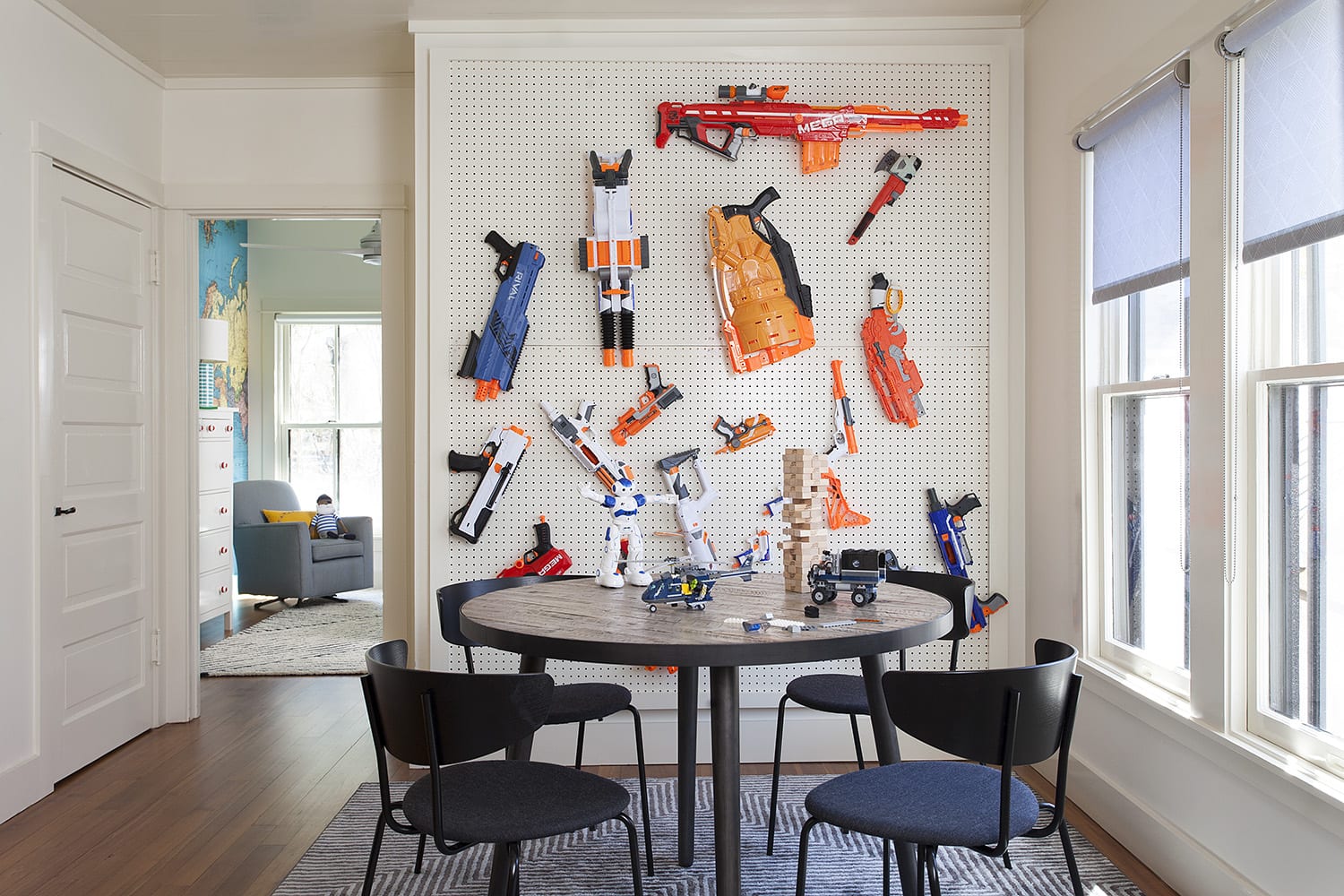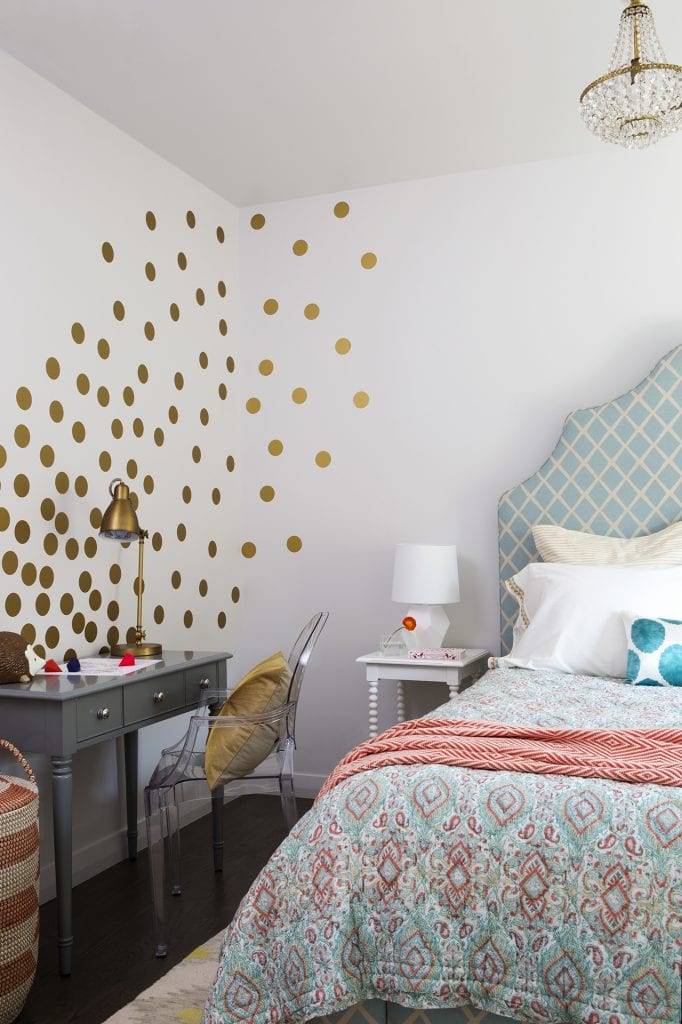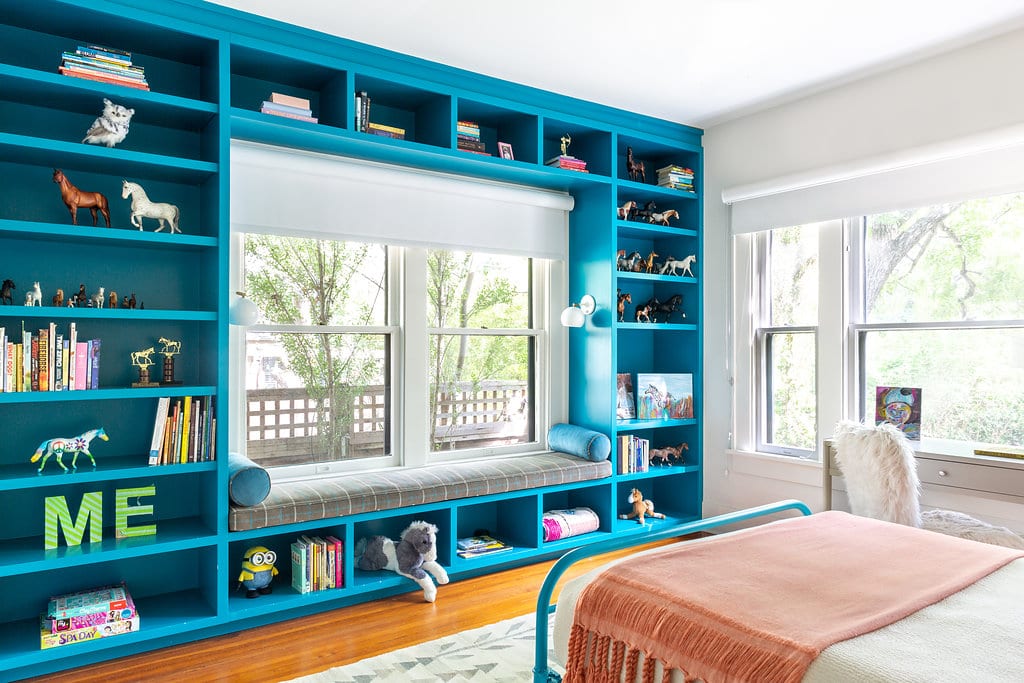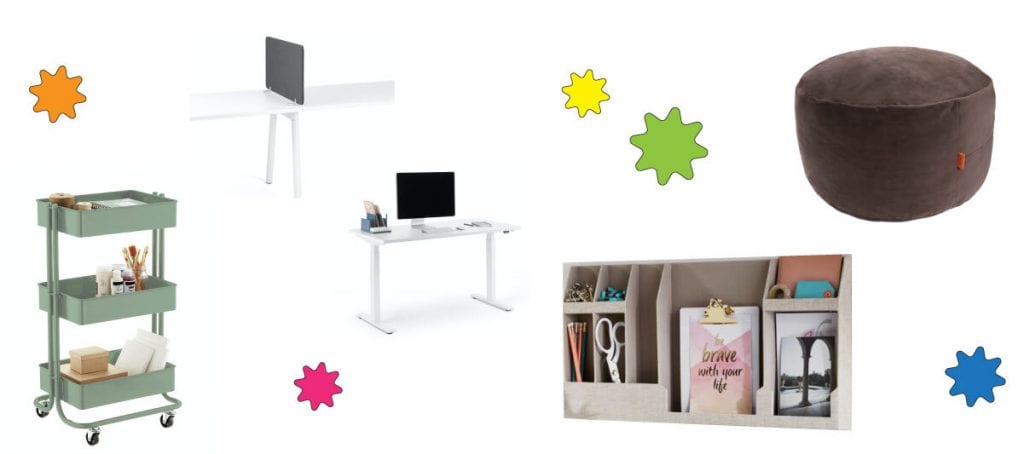Each year around this time, we find ourselves flabbergasted and asking, “Where has summer gone?”. This year we’re feeling throttled into the back-to-school routine; one that will surely require more preparation and organization than usual. To help families better transition to in-home education, Austin interior designer, Killy Scheer of Scheer & Co., answered our questions with expert advice on creating the perfect learning environment for our children.
Do512 Family: What are some of the most important elements to consider when prepping a child’s room for at-home learning?
Killy Scheer: Many of the same considerations made when setting up adult workspaces should be applied to those for kids: ergonomics, quality lighting, ample storage, organization, and comfort. But one of the most important non-tangible pieces of the puzzle is keeping kids engaged and interested, which usually means giving them options. While they should definitely have a dedicated space (or spaces) to work, it’s important that they have options so they can move around a bit and refocus in a different environment, be it a beanbag or floor pillow, standing desk or lounge chair. They’re accustomed to moving around from room to room in school – if space allows, creating similar flexibility at home is helpful.

“To create highly organized, efficient workspaces, it’s important that everything has a place so there’s no excuse for leaving something out when not in use.”
512: We’d love to set up learning stations for the kids before school starts so that they are not crowded around the kitchen table, but where do we start our search for a kids’ desk and chair? Any local companies or online shops that you’d suggest for a desk purchase?
KS: For workspaces that aesthetically fold into the rest of a home’s decor, start by checking out stores you would go to for furnishing the rest of the house. Pottery Barn and Crate and Barrel, with their kids, teen and dorm offerings, have always been a go-to source for us when designing childrens’ rooms. Wayfair also has tons of good, affordable options. For more contemporary homes, BluDot has great options that would easily translate for kids. A company called SchoolsIn offers all kinds of actual school furniture if setting up a space that feels like an authentic classroom is important. Poppin is a great resource for all types of workspace elements. Most home furnishings stores have pivoted to accommodate the new normal with Work From Home sections on their websites to complement their Back to School collections. For local shops, Austin Couch Potatoes makes it easy with their kids section full of storage beds, desks and seating.
512: Do you have any suggestions for setting up different areas as reading nooks or spaces to do arts & crafts so that kids have more than one environment for dedicated activities?
KS: If space allows, having different zones for different activities will help kids stay organized and focused. For example, a desk dedicated to activities like online learning, with a monitor, another comfortable area for reading, as well as a larger work surface – perhaps a repurposed dining table – that accommodate activities that require more space, be it several books during research and writing or art that can also double as a group work table if other kids in the bubble come over for group learning time. Poppin has several options for tabletop partitions that can sit on top or be clipped to tables. Some are fabric (and can be decorated with pictures and art), others are acrylic for visibility.

“For dedicated work spaces, creating “zones” with paint treatments or non-permanent peel and stick wallpaper give an area more presence. In one of our clients’ daughter’s rooms, we added gold dots to the wall behind her desk in a random pattern to feel like they were confetti, caught mid-explosion to ground the area and give it a focal point.”
512: Tasks that involve change can feel distressing to some children. How can designing a learning space for them help alleviate uncertainty?
KS: Creating a clean, clutter-free environment is crucial for any workspace and it’s no different for kids. However, it still needs to feel comfortable and familiar, so I suggest involving kids in an inventory process – explain that some things need to be relocated in order to make room for a better work environment and let them help choose what stays and what goes. Emphasizing that the things being removed aren’t going away forever; maybe they are just going into a box that gets stored in the garage for future use or some of the pieces get incorporated as decor throughout the rest of the house. Just because some things won’t be in their rooms doesn’t mean they have to go into the trash.
512: Do you have any tips for organizing and decluttering a child’s room to make way for books, art supplies and items needed for the new school year?
KS: If storage space in general is at a premium, get creative with using wallspace: hooks, peg boards, high shelves or tall cabinets. If it can go up high, put it up there! To reduce visual clutter limit the number of open shelves. There are plenty of wall-hung or tall cabinets with doors to keep unsightly elements concealed. Don’t overlook under-bed storage opportunities! Whether you add plastic bins that slide under a frame, replace a standard bedframe with one that has drawers, or get a lofted all-in-one bed with a desk and more storage below, maximize that space for additional organizational opportunities.
Not every family has the luxury of dedicating a whole room to learning. The most important element of at home learning is not necessarily square footage but rather creating consistency. Modular pieces are key for flexibility when space is limited: folding tables or lap desks that are stored out of sight when not in use, rolling carts that get hidden in a closet during family time, putting most supplies in a box that gets pulled out and opened only during “school” hours for use in the kitchen or living room.

“As you set up a home education space, make sure to leave room for growth: leave some empty space on shelves for more books, wall space for pinning up art. Flexibility for change in these areas is also important as kids’ interests evolve.”
512: Is there anything else we should consider when making the most of our kids’ spaces?
KS: Great lighting is essential for any space, but especially for workspaces. Natural light is the most ideal for overall wellness, but not every room has enough of it, and when the sun goes down or it’s an overcast day, electrified light is essential. The goal is always to create a variety of light levels – ambient or indirect, accent or decorative for visual interest and task for focusing on something specific, like a book. For kids, this means an overhead light (ambient, preferably dimmable), maybe a fun fixture in a reading nook and a task light for focusing on paperwork.
As with adults, kids need to be comfortable in mind, body and spirit in order to work well. It’s important to include them in the discussion about where they want to set up work spaces, ask them what types of “stations” they want, involve them in the process of selecting furnishings and accessories so they feel invested, excited and encouraged to learn.
Check out some of Scheer’s staple pieces for in-home learning:

From left to right: Container Store Rolling Cart, Poppin Privacy Panel, Poppin Adjustable Desk, PB Teen Wall Organizer, Austin Couch Potatoes Bean Bag.
For more info, visit:
Scheer & Co. website: http://scheer.co/ – Instagram: @ScheerandCo
Austin Couch Potatoes website: https://www.austincouches.com/ – Instagram: @atxcouchpotatoes
–> Win an oversized Bean Bag from Austin Couch Potatoes! Enter below for your chance to win an oversized bean bag valued at $299 (or click here if you’re entering on mobile). This 48″W x 48″L x 30″H can be one of your child’s favorite (and most comfy) reading spots in the house! For local pick up only at one of the ACP locations.
Our giveaway has now ended and our winner has been notified. Thanks to all who entered!


